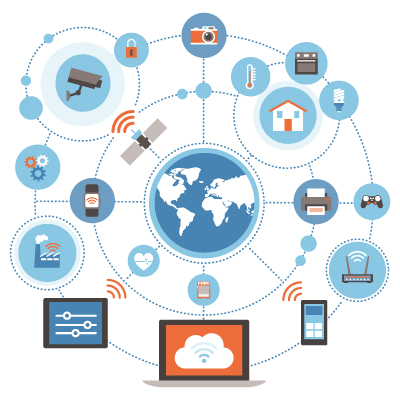As is the case with most things, the past few years have seen significant changes in entertainment, thanks to the development of technology. We have literally gone from using extremely sensitive and delicate film to capture footage, manually trimming it on flatbed editors in dark rooms, to capturing, storing, editing, and displaying it digitally. Let’s explore how the nature of entertainment has shifted as technology has developed over time.
Artificial intelligence is becoming ubiquitous in the business technology sector and for good reason. It’s allowing small and medium-sized businesses to do more and compete with businesses that were previously just ahead of them. Today, we want to go over some (reasonably) easy ways you can use AI in your IT operations to make your business more efficient.
If you’re a smart manager, you’re always looking for ways to optimize spending and enhance your organization’s ability to be efficient. Voice over Internet Protocol (VoIP) isn’t just a trendy tech term; it’s a strategic financial move that can significantly impact your bottom line. Today, we get into how VoIP translates to real cost savings.
Water cooling is a common method of keeping computing hardware at reasonable temperatures, particularly for gaming PCs, data centers, and similar high-demand applications. What if, however, a business used a similar method to keep their entire building climate-controlled? Microsoft intends to do so in some new data centers, as many residences have begun implementing a version of this system.
Most businesses these days utilize cloud computing in some way (about 90 percent, as a matter of fact). How is your business utilizing this technology? Regardless, you want to have security locked in for your cloud computing resources, which is what we want to focus on for today’s blog article.
Being a green business is a great thing. It not only helps your company become more environmentally friendly, but it can also attract customers who care about the environment. What’s less talked about is how being green can actually give your business a competitive edge in certain situations.
When you think about it, the technology we have today is truly awe-inspiring, simply because it enables us to be so much more productive as we exercise our creativity. All one really has to do to prove its value is to compare the quality of life we enjoy now as compared to almost any time in the past. However, this does not mean that everyone is using technology to its full capacity and, as a result, suffering some consequential effects. Let’s consider some of these effects to reinforce why it pays to embrace the potential uses of technology fully.
AI might be able to pull off some crazy things, but it’s far from perfect. Depending on the service or solution, it can dramatically increase your output or change your workflow for the better. If you’re not up-to-snuff with your Photoshop skills, you can rely on AI to help you fill in the gaps, both literally and figuratively, in your photo editing skills.
The Internet of Things, or IoT, has transformed how modern businesses operate in 2024. Whether you’re a manufacturer or a healthcare provider, the IoT offers previously impossible applications, from real-time data collection to smarter decision-making. Let’s explore some ways your business can use IoT in 2024.
All businesses use technology to varying degrees, typically to improve operations or offer innovation through a service or product. SMBs often benefit from the increased use of technology in the business world, as it’s generally quite effective at solving their problems and accessible enough that even companies on a budget can afford it. Let’s look at some opportunities your own business might have in 2024.










